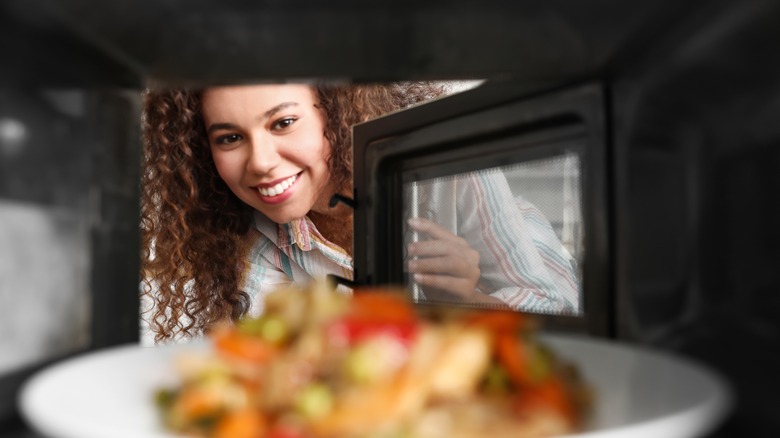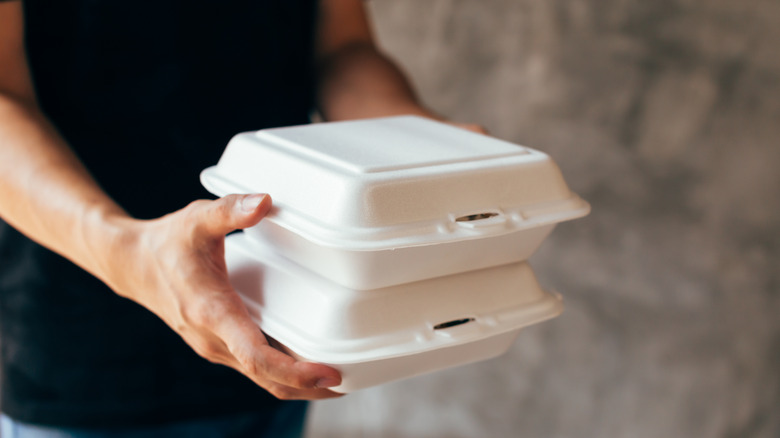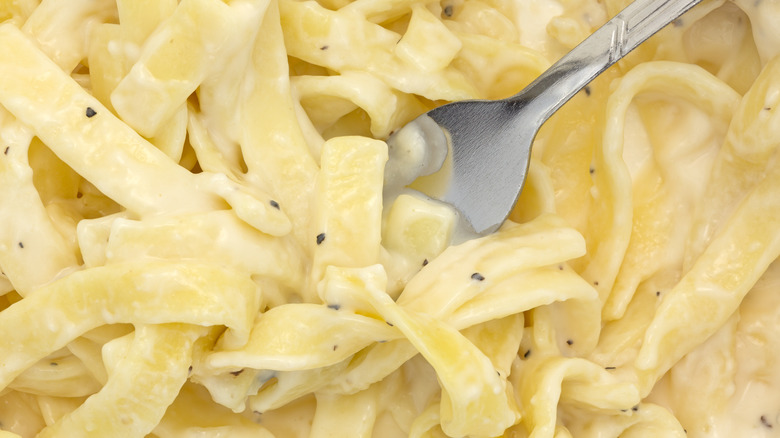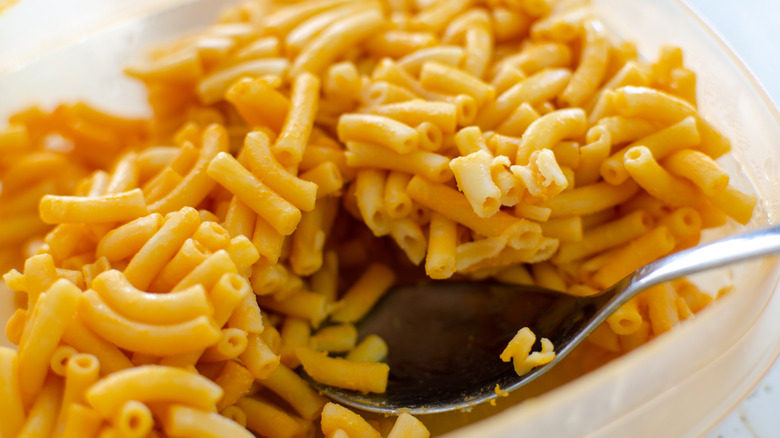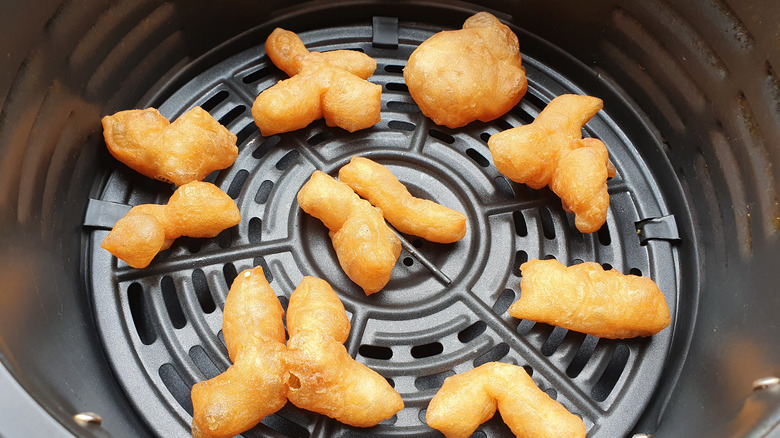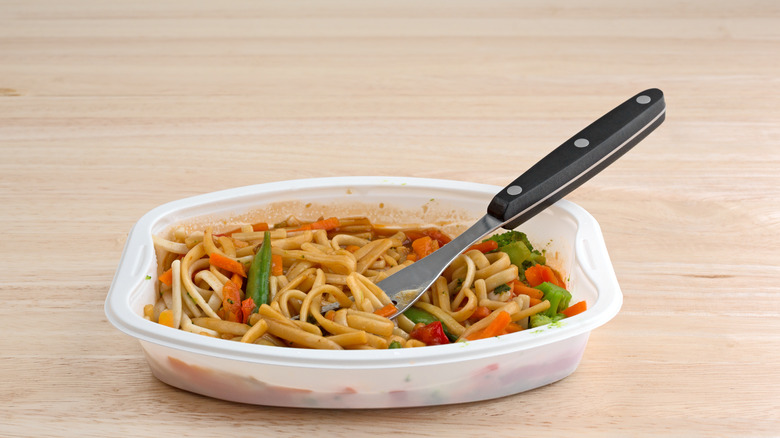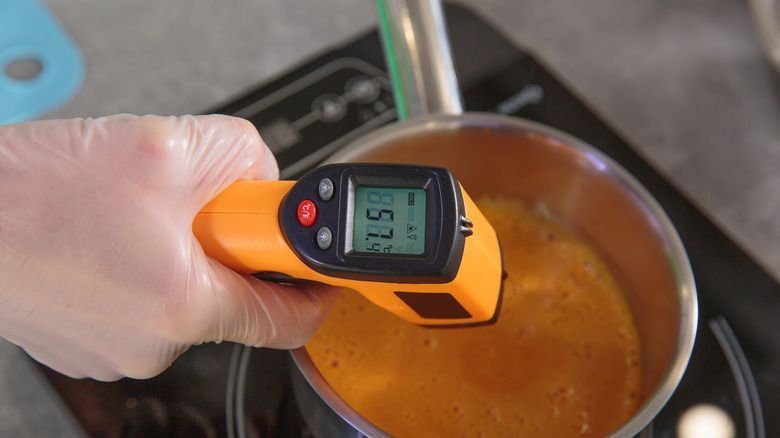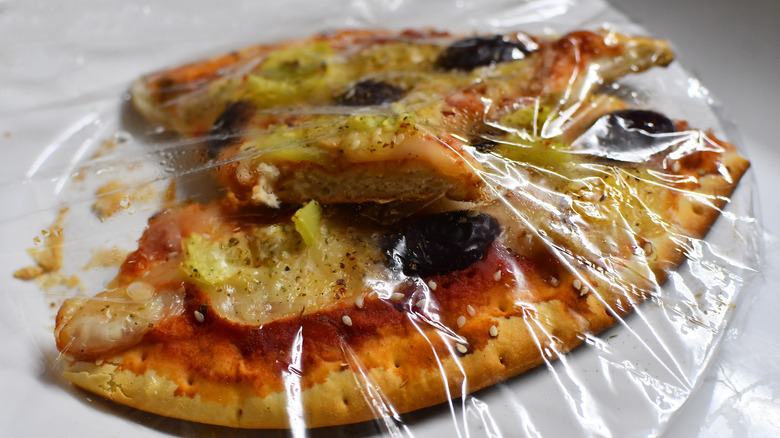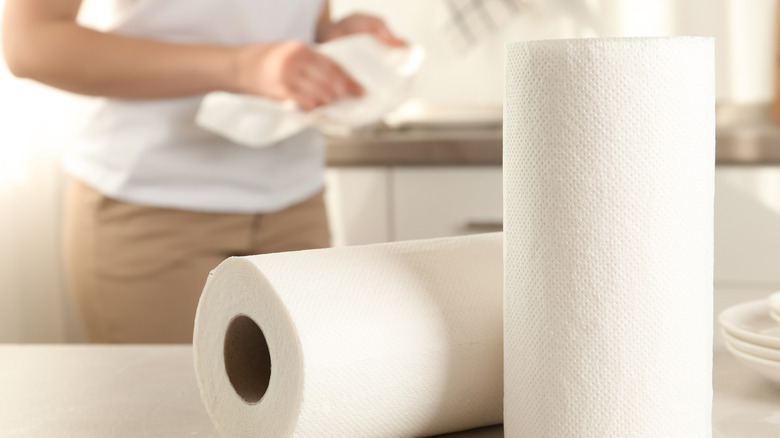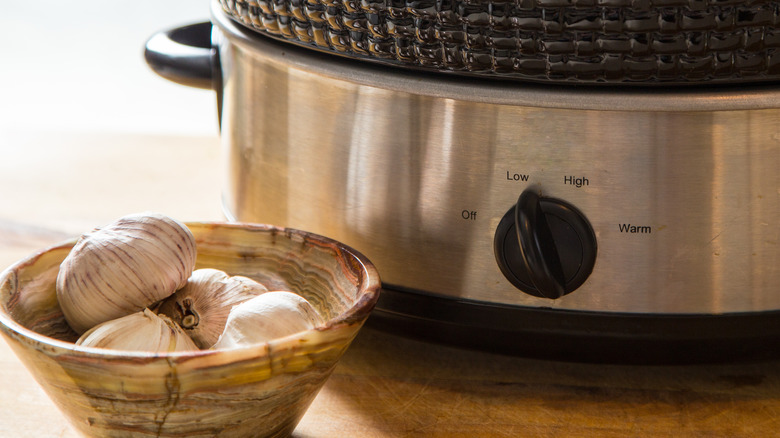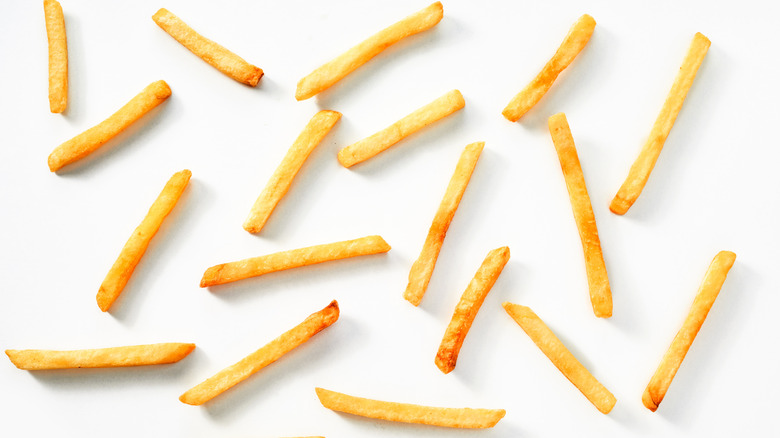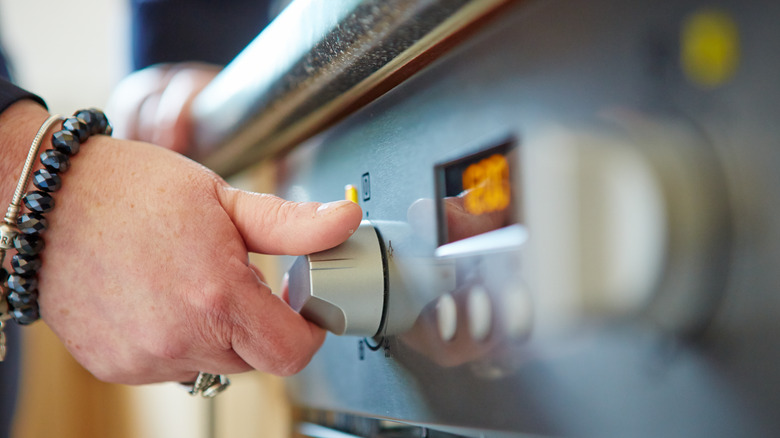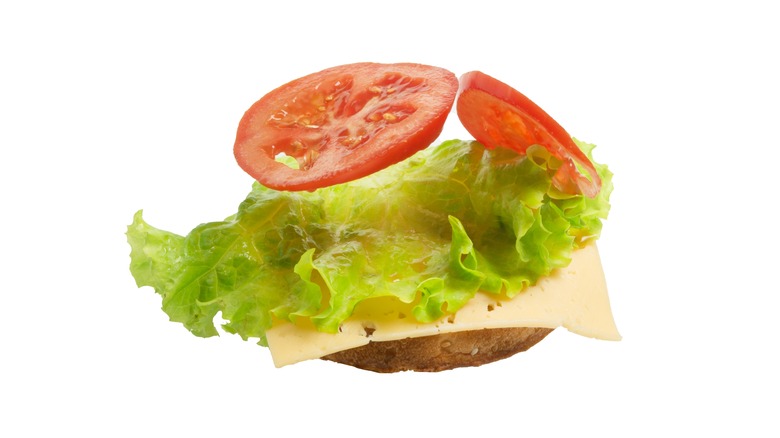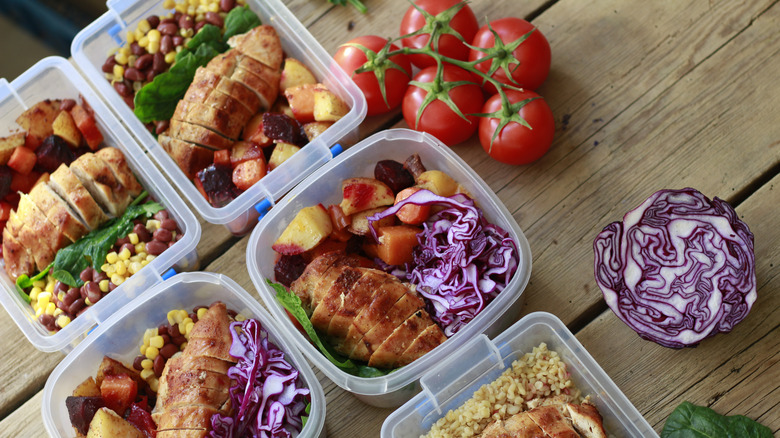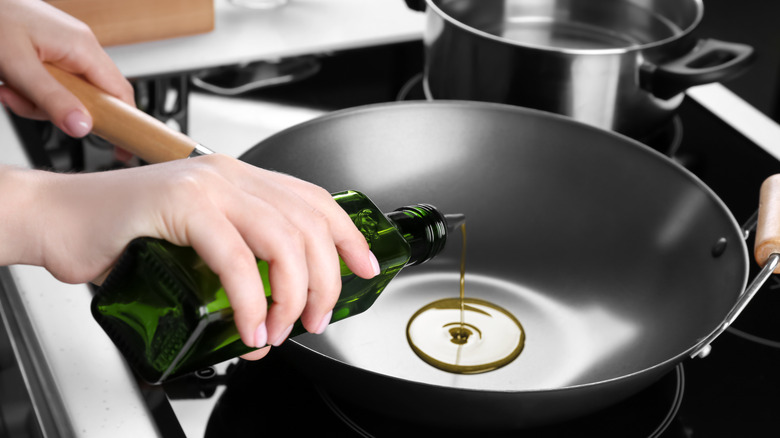The Biggest Mistakes Everyone Makes When Reheating Food
If you know the phrase, "what you don't eat today, you'll eat tomorrow," you probably grew up in a leftover-friendly household. Both leftovers and strategic meal-prepped foods are easy ways to reduce time in the kitchen on busy weeknights or combat food waste from whatever restaurant you went to for dinner last night. And while some cold foods, like green salads, cold noodle bowls, and deli salads, don't require you to reheat them, other foods require you to take special care in reheating them.
Finding out how to reheat some foods can be a nightmare — and a reason why some people despise leftovers. We're happy to report that gone are the days of shoving your T.V. dinner tray in the microwave for three minutes — an arbitrary number you conjured up in your brain — and having it come out more like a savory soup than lasagna. Here are some of the ways you might be incorrectly reheating foods.
Microwaving food in a styrofoam container
What you're reheating your food in matters. There are several containers you should never reheat food in, including plastic bags, paper bags, and styrofoam. Paper bags can ignite in a microwave and release noxious fumes at high temperatures. Plastic bags can also melt at high temperatures and release the compound bisphenol A (BPA). An article published by the National Library of Medicine notes that excess exposure to BPA links to endocrine disruption, fertility problems, and issues in childhood development.
Heating styrofoam in the microwave also poses numerous risks to human health. Some types of foam containers contain styrene. The Occupational Safety and Health Administration notes that repeated exposure to styrene can lead to the formation of certain cancers, headaches, fatigue, and central nervous system damage. Avoid these risks by placing your food on a separate plate or using a container marked "microwave safe." These marks can usually be found on the bottom of a container or with the external packaging details.
Forgetting to stir the food while reheating it
If you are a "set it and forget it" food reheater, you should rethink your methods. Stirring your food helps eliminate the impact of microwave cold spots. The cold spots emerge when the waves enter the microwave and hit the food irregularly. Neglecting to stir your food while it's cooking may result in unappetizing cold pockets and foodborne pathogens still lurking in the food. Instead, we recommend stirring or rotating the food midway through the cooking time. You can also flip the food over to ensure both sides cook evenly when working with large food, such as chicken breasts or pork chops.
You should also allocate some time at the end of cooking for your food to stand. This interval of time allows your food to continue cooking in the residual heat of the container, thus killing off potential pathogens and ensuring every piece of food is cooked through.
Reheating leftovers more than once
If you think with your eyes rather than your stomach, you might reheat more food than you can eat. But, reheating food more than once can cause many potential human health hazards. Repeatedly changing the food's temperature — from cold to hot to cold again — can cause bacteria to proliferate and make you sick. Some foods, like rice, are hazardous to reheat multiple times. According to the National Institute of Health, Bacillus cereus spores can remain on rice after it's cooked and is especially active once the food has been reheated and left to sit on a counter.
The United States Department of Agriculture (USDA) notes that the food's quality also decreases each time it's heated, so the best plan would be to take out how much food you plan on eating and put the rest back in the fridge. Of course, you can always take more food if you want.
Only using your microwave to reheat food
Your go-to appliance for reheating your food is likely your microwave, but you can use many different kitchen appliances to reheat food instead. The ideal type of appliance to reheat food depends on the food's texture. The best pairing is usually whatever the food was cooked in initially. By this premise, stir fry would be best reheated in a wok or skillet, while breaded pork chops would be best reheated in an oven.
Tabletop appliances, like air fryers and toaster ovens, can also be helpful tools for reheating food. Reheating crispy foods, pizza, and meat in an air fryer is the best way to go. We recommend layering the food in a single layer and shaking it halfway to get the most even reheat. A toaster oven is an invaluable tool for wraps, bread, and sandwiches because it can make the exterior of these foods perfectly crispy in less than 15 minutes.
Reheating food that should just be thrown away
You must be very careful with how much time cooked food is left in the fridge. Enjoying some foods too long after their "toss date" can cause foodborne illness and overall dissatisfaction with the texture and consistency of the food. According to the USDA, leftover food lasts in the fridge for about three to four days before it needs to be thrown out. If you cook food but don't plan to eat it until four days later, you should try to freeze it. The USDA notes that this is the safest storage option and can extend the life of your food indefinitely, but for the best quality, you should eat these frozen leftovers within a few months.
Besides time, there are other signs that the food you're eating has gone bad and should not be reheated. Moist spots, sliminess, and a foul odor are all signs of food spoilage (via the USDA).
Leaving leftovers out too long after you've reheated them
You should eat the food you reheat right away. Leaving your food on the counter while you attend to other tasks can cause an increased risk for pathogen exposure since the food is likely within the USDA's temperature danger zone of 40 to 140 degrees Fahrenheit. In addition, the agency notes that bacteria can be introduced to the food after it's reheated. Therefore, you should keep all the leftovers you don't plan on eating in a shallow container and in your refrigerator — where the temperature is below 40 degrees Fahrenheit.
If for some reason, you need to leave your reheated leftovers out to attend to something else, you need to keep its temperature hot — greater than 140 degrees Fahrenheit. This might include leaving the food in a hot skillet to finish cooking or turning your oven on to keep the food warm.
Not reheating food to the proper temperature
There are a lot of numbers that get thrown around when cooking, thawing, and reheating food. The standard temperature you should reheat all food is 165 degrees Fahrenheit, per the USDA. Sauces, gravies, and soups should be reheated to a rolling boil.
The only way to tell if your food is reheated sufficiently is to use a food thermometer. The University of Minnesota Department of Extension notes that the proper way to take a food's temperature with a dial thermometer is to insert the thermometer 2 inches into the thickest part of the food. Then, wait 15 to 20 seconds for the temperature to register before pulling the thermometer out. For a digital thermometer, you should insert the stem of the thermometer a half-inch from the surface and wait at least five seconds. The latter tool is better for thin foods, like chicken or hamburgers.
Leaving your leftovers uncovered while reheating them
Keeping the moisture in is vital to warm up your leftovers effectively. You should always cover food in the microwave to efficiently trap the heat and moisture the food releases. This can help the food cook while preventing overcooking. Moreover, a steamy environment helps kill off any lingering bacteria or pathogens in the food.
There are several different options for covering your food. A plastic wrap is a good option for covering food because it traps moisture and can easily cover most foods. You can lift a corner of the plastic wrap if you want to mitigate the amount of steam produced. Glass covers provide a more foolproof seal, but caution must be expressed when removing the cover to prevent burns. You should avoid using aluminum foil and paper products containing nylon or nylon filament when reheating foods in the microwave — since both of these products can ignite.
Forgetting to cover the food with a damp paper towel
Moisture is a crucial factor in keeping reheated food soft. We recommend layering a damp (not dripping) paper towel over your food to help create more steam when you microwave it. The paper towel will also prevent some splatters from hitting the walls of the microwave as the food cooks. Moreover, spreading your food in an even layer will help encourage the food to heat evenly and ensure that all of your meal's components reach the desired temperature of 165 degrees Fahrenheit.
If you don't want to use a paper towel on top of your food, you can add a spritz of water directly to the food. For example, if you plan on reheating rice, you'll want to add two tablespoons of water per each cup of cooked rice. The extra moisture will keep your rice soft and plush in the microwave.
Reheating leftovers in a slow cooker
There are some kitchen appliances you should use to reheat food. But the slow cooker is not one of them.
You should not reheat leftovers in a slow cooker, like a Crock Pot, because the temperature won't get above the "danger zone" quickly enough, per Southern Living. These appliances are designed to warm food incrementally, thus increasing the potential pathogen exposure for reheated foods like casseroles, soups, and grains. Stick to using an appliance that can more readily reach a safe reheating temperature — like a microwave or an air fryer.
You should also avoid using the slow cooker to reheat food, even if you made the food in the slow cooker, to begin with. Southern Living also notes that if you refrigerate food in the slow cooker insert, adding it back to a hot appliance base can cause cracking. The outlet adds that you should never freeze food in your slow cooker basin because the dramatic temperature change can damage the basin.
Reheating fried food in the microwave
If you have fast food fries from earlier in the day or night, you can turn to them for a quick snack when the craving hits. But the last place you should look to reheat fries is your microwave. The steam from the inside of the fries will cause the exterior of the fry to go limp.
Instead of reheating fries — or any crispy fried food — in the microwave, you should turn to your stovetop, air fryer, or oven. You can shallow fry your favorite fried foods in a few tablespoons of oil for a couple of minutes until they crisp back up — and don't forget to add salt for flavor while the fries are still hot. If you go the oven route, you should use your broiler to help bring the crispiness back to your fries. An air fryer is another trick for reheating fried food without adding extra oil.
Bringing your food to temperature in a cold oven
One of the golden rules of baking is always to preheat your oven. But is preheating your oven important for leftovers, too? Preheating your oven before putting in the food you plan to reheat is essential because it reduces the time the food is in the "temperature danger zone." This means that your food can go from the cold of your refrigerator to the blazing hot temperature of your oven in a matter of minutes.
You might be dragging your feet on this one since preheating an oven is kind of like watching paint dry. But pathogens can multiply in the food "danger zone" in as little as 20 minutes. Isn't it better to take 10 minutes to preheat your oven than to contract a foodborne illness? Plus, you can set your oven and prepare the food while waiting for it to preheat.
Forgetting to deconstruct food before reheating
Leftovers don't always come ready to be reheated. Think about a burger. You have the bun, which will get soggy if you microwave it. Then you have the lettuce and the tomato, which don't need to be reheated. The patty can go in the microwave or the oven — it's up to you.
The best method of reheating foods like burgers is to deconstruct them. We recommend trying to scrape off as much of the condiments as possible (or ordering your burger with condiments on the side, especially if you know you can't eat a whole one) and adding them back fresh once all the components of your sandwich are reheated. We recommend using a toaster oven or a skillet to reheat the bread. Cooking the patty on the stove with a couple of tablespoons of water will enhance the moisture and bring the meat back to its drive-thru state.
Not preparing your leftovers to be reheated
You need some essential tools if you're planning on reheating meal-prepped portions of food throughout the week — most notably, containers. We recommend storing all food portions in air-tight containers for maximum freshness and longevity. These sealed boxes minimize airflow through your food, which may alter its taste or aroma. In addition, these containers can come in lightweight plastic and glass, which makes for customizable storage options for every meal prepper.
We recommend keeping sauces, dressings, fruits, or foods that don't need to be reheated in separate containers. That way, when you're ready to reheat, you can pop the container in the microwave (with a lid already on), and you're ready to start cooking. And while many of your foods may need to be reheated, it's likely that some foods are less dense than others and will require a different amount of time in the microwave. So you'll find the whole process much more manageable if you store your food to maximize reheating efficiency.
Forgetting to add a bit of liquid when reheating sauces
The damp paper towel trick will only work for reheating some things. If you're reheating sauces, you'll find that adding a bit of stock, oil, or water to the pan and working with ingredients at the same temperature will help reduce the risk of splitting. You can reheat pasta with cream sauce by adding hot milk to a wide saucepan. Then, once the saucepan is hot, add room temperature or microwaved pasta to the pan and stir vigorously. The stirring and the heat will improve the emulsification of the sauce and result in a much creamier, smoother, and more delicious reheated pasta.
If that way of heating it up doesn't work for you, there is a slightly different plan of action for gravy. Spooning the gravy into the pan helps break up some of the congealed fat while slowly letting the gravy rise to temperature helps create a smoother sauce. Adding a splash of stock or milk can help if the gravy is too thick. If the gravy is too thin, you could add a cornstarch slurry to help thicken it.
